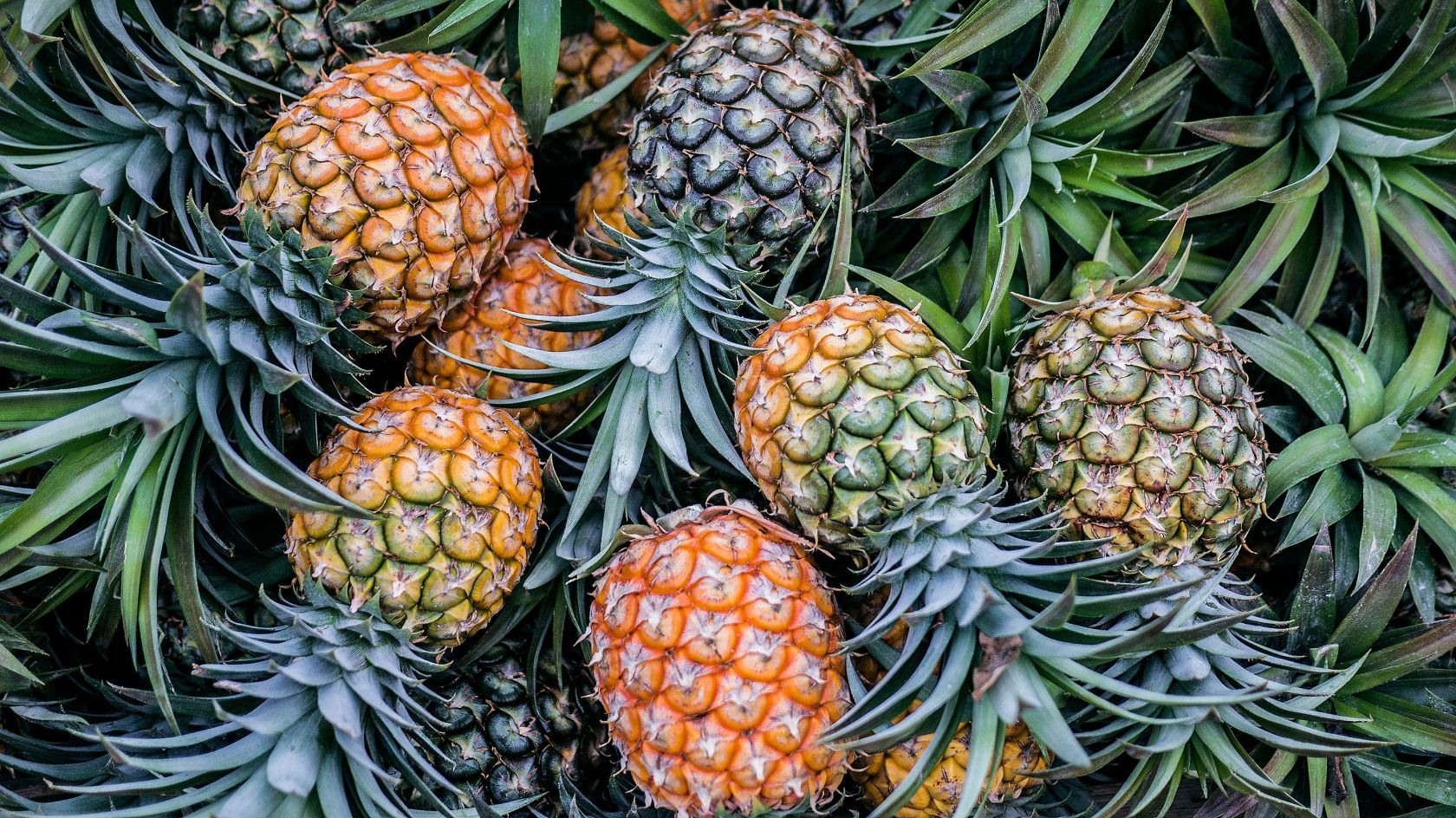Hello? Pineapples aren’t predatory! But read on.
Meat-eating plants attract, trap and digest animals for the nutrients they contain. There are around 630 species of known carnivorous plants, and although most consume insects, larger ones are capable of digesting reptiles and even small mammals.
Venus Fly Trap
This is the best-known of the carnivorous plants (scientific name, Dionaea muscipula). Its leaves have tooth-like spines on their edges, and a coating of fine hairs on the inside, and movement on the hairs triggers the trap to shut, with the prey stimulating enzymes which will slowly digest the insect. You might playfully put your finger in the trap to see it close, but it won’t be strong enough to grasp it securely, and you can easily pull away. But be kind, as repeatedly triggering the trap can harm the plant. They are capable of photosynthesising just like any other plant, but their catch provides them with extra nutrients.
King of carnivorous plants
This is Nepenthes Rajah, one of the carnivorous pitcher plant family, and it can hold well over 3 litres of liquid. Found in Borneo, it’s one of the largest flesh-eating plants on the planet, and will digest insects, geckos and frogs that fall into their water - and has even been recorded catching small mammals such as rats.
Now about the Pineapples
Pineapples are from South America, and will only produce one fruit in its lifetime, but has ‘pups’ that will produce in the future. Pineapples produce a protein called bromelain, which will break down animal proteins into amino acids and digest them. Strictly speaking, pineapples aren’t predators, but the bromelain is everywhere on the plant. Their leaves are designed to catch water, and sometimes an ant or small insect falls in. Once trapped, the insect usually starts chewing on the leaf to rescue themselves, but as they chew, bromelain gets released from the plant and dissolves into the water, and the protein then slowly dissolves the trapped creature. This extra protein can be helpful for pineapples growing wild, though commercially grown ones rely on fertilizer.

Pineapples can hurt you!
Here’s an interesting fact. When you eat fresh pineapples, the bromelain contained in them breaks down proteins on the roof of your mouth and tongue, so if you really pig out on them, it will make your mouth feel sore! This occurs only while eating fresh pineapples - canned or cooked ones are OK, as heat destroys the bromelain.
But experts say irritating shards found in the fruit’s flesh are actually the real culprit. These are called raphides, and are tiny, microscopic, sharp, needle-like crystals made of the mineral calcium oxalate (the same substance that forms kidney stones) that serve as part of the fruit’s natural defence. They’re not big enough to inflict serious harm to a human mouth, but they can do some serious damage to small insects. It still doesn’t mean we are in the clear - raphides can cause microscopic abrasions to tongues and the insides of cheeks, then when the tangy, acidic juice from the pineapple seeps into enough of those tiny microabrasions, and you feel that tingly, burning sensation. Bromelain is generally well-tolerated in the stomach; it doesn't typically damage the stomach lining.
Cooking the pineapple can remove most of the enzymes, or pair the fruit with a creamy dairy product - not only will this taste good, it will also give the bromelain another protein to digest, and help neutralize the pH.
Medical uses for Bromelain
Indigenous peoples of Central and South America used pineapple for its medicinal properties long before its chemical properties were understood. It is often used to ease pain and swelling, especially for the nose, sinuses, and gums. Some have used it to treat sore muscles, the pain of osteoarthritis, and burns. A small number of studies show that there’s not a lot to show that it’s effective for these uses, but research has shown that bromelain may help heal burns by removing dead and damaged skin (debridement), and dressings that contain bromelain have been used in hospitals to treat third-degree burns.
Marilyn writes regularly for The Portugal News, and has lived in the Algarve for some years. A dog-lover, she has lived in Ireland, UK, Bermuda and the Isle of Man.
















